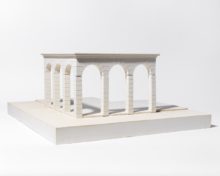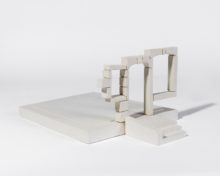Material Culture |
PhD Eireen Schreurs
2018 - 2022


Cultures of Making vs the Making of Culture
Conventions and traditions of building, of their use and of building techniques are the result of complex historic processes (OASE #92). Interestingly, in the new insights on the historical and contemporary discourse of material culture, the relation between material, form and architecture receives little attention. Material culture, with origins in the mid 19th century, researches the intertwined, and often dialectical relationships between people and their things: the making, history, preservation, and interpretation of objects (Woodward, 2007). Material Culture Studies extends over different academic disciplines, including anthropology, sociology, art history and archaeology. Though their angle differs, all these academic fields focus on ‘people and their things’ as makers of culture, and typically put the perspective of the user or consumer centre stage. This research will depart from the perspective of the producer, and studies how people construct cultures by the ‘things’ they invent and produce, in the process creating cultures of making.
Stoffwechsel updated
Since the onset of post modernism, the development of the architectural discipline walks a tight rope between continuity and innovation. The Semperian theory of Stoffwechsel has thematised exactly this balance, and for this reason is chosen as a ‘case study’ that can shed new light on the issue. In the search for the relation between material and form, Semper studied ancient Greek temples, where wooden columns transformed into stone, but in the detailing kept some of the wooden detailing. He named this Stoffwechsel, or material change, and defined it as the ‘transfer of knowledge [when changing] from one material to the other, leaving traces of its history.’ (definition Moravanszki, 2015, from Semper). The phenomenon of Stoffwechsel reveals a set of design questions that is operative in the process of materialisation and that demonstrates how continuity and innovation are indispensable components of the design process. What does the knowledge consist of and how can it be revealed? What forms can the transfer take? What traces of history can be included and why? By making the ethical, aesthetical and cultural dilemmas that have played a role in the Stoffwechsel theory explicit, the term hopefully proves its relevance for contemporary discussions. Also, it can offer a new understanding of the ‘tacit knowledge’ that is embedded in the process of materialization of buildings.